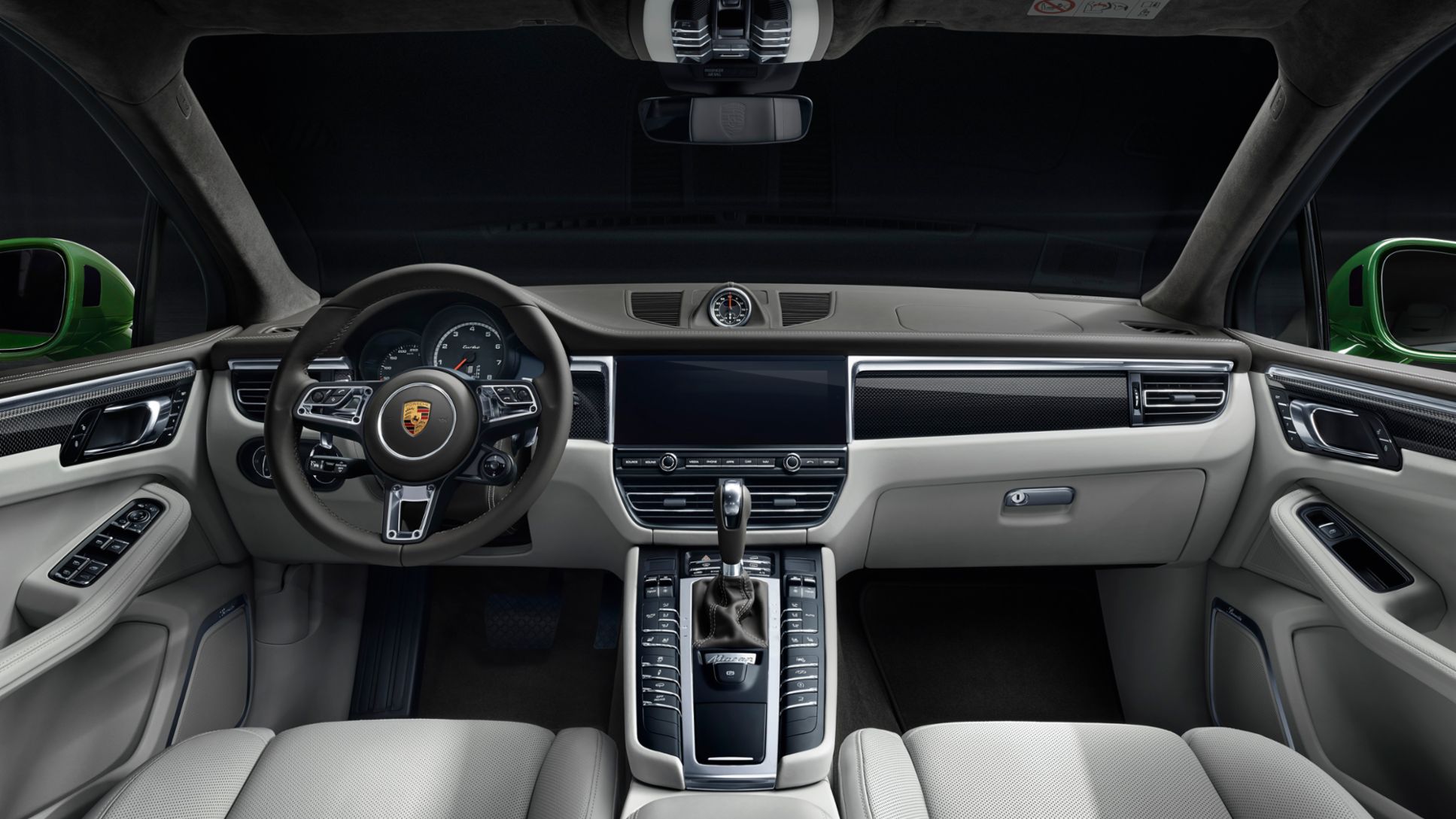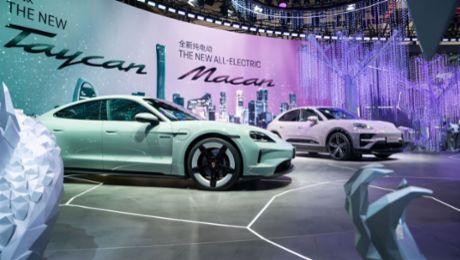Macan Turbo: Fuel consumption combined 9.8 l/100 km; CO₂ emissions combined 224 g/km
Porsche has expanded its range of assistance systems for the Macan as part of its latest model upgrades. The new Macan Turbo also benefits from this. More powerful sensors, as well as data and image processing, have enabled the introduction of a range of new functions. Lane Keeping Assist, Lane Change Assist and Speed Limit Display are still available as options, while adaptive cruise control has been developed into a Traffic Jam Assist system.
Using the radar sensor located in the middle of the central air intake, the adaptive cruise control system monitors the distance from vehicles in front and automatically adapts. Vehicles that cut in from adjacent lanes are also detected. If necessary, the system will brake to a standstill when following a vehicle. Thanks to the stop-and-go function, the vehicle is able to move off again independently after braking to a standstill. If the vehicle is stopped for longer than three seconds, all it takes to get the car moving again is a brief press of the accelerator or the control stalk.
Three-stage system of parking assistance functions
The additional Traffic Jam Assist function extends the stop-and-go function by providing steering assistance. Using the optimised radar and video sensor systems and at speeds between zero and 60 km/h, it detects lane markings and vehicles driving ahead in the same or adjacent lane. When the system is active, the vehicle can be kept in lane by targeted steering interventions. This leads to a considerable reduction in the strain on the driver and significantly increased comfort when in a traffic jam or slow-moving traffic. The warning and brake assistant system, which reduces the risk of collisions with both vehicles and pedestrians, is a component of the adaptive cruise control and thus also of Traffic Jam Assist. The system uses the front camera to detect when vehicles or pedestrians are in the collision area and warns the driver visually and acoustically in the first stage. The system will warn the driver in a second stage via a braking jolt if the Macan is still moving too quickly towards another vehicle. A braking operation initiated by the driver is reinforced up to full braking if necessary. If the driver does not react, automatic emergency braking is activated to mitigate the consequences of a collision.
There is a three-stage system of parking assistance functions. The optional Park Assist informs the driver with visual and acoustic warnings when manoeuvring and parking, via front and rear ultrasonic sensors. Park Assist can also be optionally supplemented with a reversing camera. This helps with manoeuvring by showing a colour camera image on the PCM screen with dynamic guidelines and distances to potential obstacles. Park Assist with Surround View calculates a birds-eye view from four individual cameras that helps when parking and manoeuvring. The PCM screen now operates at a much higher resolution.
Thermally and noise insulated glass is optionally available in combination with privacy glass
A range of different glazing options is available to meet individual comfort needs. A heated windscreen is optionally available for the compact SUV for the first time in the form of a special film integrated into the windscreen that does away with the need for any heating filaments. The Macan can also be equipped with enhanced thermally and noise insulated laminated glass – a new acoustic film in the laminated glass design provides improvements in three key areas: almost 100 per cent of harmful UV rays are completely blocked, external noise is reduced even more effectively, and better protection is provided against a break-in.
The thermally and noise insulated glass is optionally available in combination with privacy glass. With this option, which is also available separately, all windows behind the B-pillar are heavily tinted. This tinting reduces visible light to below 20 per cent for the rear side windows (below 30 per cent in combination with the thermally and noise insulated glass) and below 30 per cent for the rear window. To further increase privacy, the darker-tinted glass can be supplemented with sun blinds for the rear side windows.



.jpg/jcr:content/DR.BLUME_PK_TAYCAN_4S%20(3).jpg)